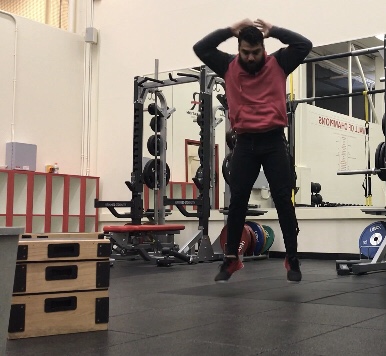Pyramids, To-Do Lists, Circuits, and Add-Ons are great ways to vary HIIT protocols. Get creative with the work-to-rest ratios. Over the past few months, I have been introducing some of my clients’ favorite high-intensity interval training (HIIT) protocols.
Don’t your clients get bored?
While exercise selection, specifically compound movements, are incredibly crucial for real benefits, some argue that clients may get bored doing the same exercises.
To this, I suggest getting more creative with the protocols, namely the work-to-rest ratios.
Clients can do the same sets of exercises, but simply adjusting the protocol will actually lead to:
- Increases in O2 efficiency
- Higher VO2/cardiac output
- Lactate production
- Both fast and slow twitch
- Burning of fat as fuel
Exploring Variety with Protocols
In previous blogs I’ve talked about the Tabata, AMRAP, and EMOM protocols. Each of which has its own work-to-rest ratio.
I like to take the same exercises from the examples of each of those protocols and do patterns such as – Pyramids (sometimes also called ladders), To-Do lists, Circuits, and Add-ons.
Pyramids
Pyramids can be done in ascending order (10, 12, 14,16 reps), descending order (16, 14, 12,10 reps), or both. Rest will vary, but it’s helpful to give a time goal for these as an AMRAP round.
To-Do List
To-Do lists give sets of exercises, repetitions, and an amount of time. For example, 5 movements and 50 repetitions to be completed in 20 minutes. For this protocol, I encourage clients to break the 50 repetitions into smaller, more manageable chunks rather than completing all 50 reps of one before moving on. Active recovery can be taken in transitions.
Circuits
Circuits are a mainstay in the fitness industry at this point; put simply: clients move around completing exercises at different stations for a set time. For example, 5 stations, 45 seconds per station, 15 seconds to transition and that doubles as active recovery.
Add-Ons
Add-Ons can have any number of exercises. For the holidays I did 12, and the number of the exercise also represents the number of repetitions to do of that exercise. Clients always start with the first exercise. Then, to exercise 1 and 2, then 1, 2, and 3, and so forth. The recovery time, if this is done like an AMRAP, will be at the end of the round.
Let’s look at some examples of all these protocols with the same 5 exercises: hand release push-up burpees, thrusters, kettlebell swings, tuck jumps, and jack presses.
Pyramids
| Work time | 6 minutes |
| Recovery time | none |
| Number of exercises | 5 |
| Number of repetitions | Changes each round (30, 20, 10) |
| Number of cycles | 1 |
To-Do List
| Work time | 20 minutes |
| Recovery time | Varies (active recovery in transitions) |
| Number of exercises | 5 |
| Number of repetitions | 50 (broken into 2-4 sets) |
| Number of cycles | 1 |
Circuit
| Work time | 10 minutes total |
| Timing per movement | 45 seconds per station. |
| Recovery time | 15 seconds (active recovery in transitions) |
| Number of exercises | 5 |
| Number of repetitions | 10 |
| Number of cycles | 2 |
Add-Ons
| Work time | 5 minutes total |
| Timing per movement | Varies |
| Recovery time | none |
| Number of exercises | 5 |
| Number of repetitions | 35 total |
| Number of cycles | 5 |
A few things to consider before running clients through any of these protocols are:
- Has client been given a dynamic warm-up that targets all of the muscles and joints utilized in the workout?
- Has your client been through other protocols that provide a bit more recovery, and are thus ready to test protocols without dedicated recovery?
- Do you have progression or regression options in mind if the workout becomes too overwhelming or too easy?
What are some of your progression and regression options for these workouts? How often do you get your clients utilizing HIIT protocols?
[info type=”facebook”]Join the conversation on the NFPT Facebook Community Group on Facebook![/info]



